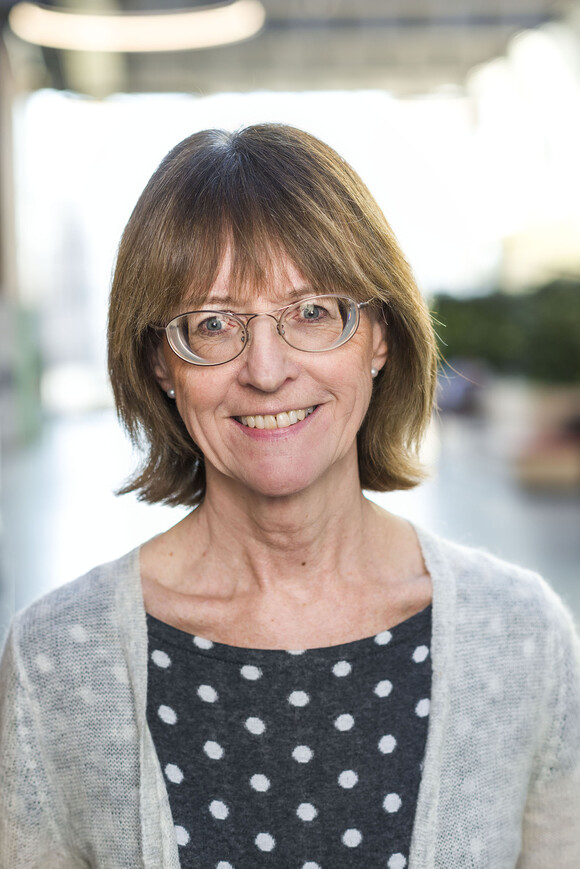“Jon Fosse receiving the Nobel Prize in Literature in 2023 was fully deserved. He has created a completely unique and new style of writing,” says Professor Unni Langås.
In a new analysis, she shows how Jon Fosse creates profound literature with a seemingly simple writing style that he himself has developed.
Fosse was well received by critics already upon his debut in 1983. The international breakthrough came with the play Nokon kjem til å komme (1996; Someone Is Going to Come).
The Nobel Prize in Literature
Since his debut, he has written novels, poems, plays, and essays, receiving numerous awards and honours for several of his works.
The greatest honour he received was being awarded the Nobel Prize in Literature in 2023.
“It's quite an honour, to have a Nobel laureate in literature hailing from Western Norway. He certainly is a genuine artist. The prize is well deserved and absolutely fantastic,” says Langås.
She is a professor at the University of Agder (UiA) and has been studying Jon Fosse since 1998.
“Part of the reason Fosse writes at Nobel Prize level is that he writes books in his own style. He has developed his own writing style, so he is indeed unique,” says Langås.
Now she has analysed the novel Stengd gitar (1985; Closed Guitar), the children's book Kant (1990) and the play Eg er vinden (2008; I Am the Wind).
Language and content go hand in hand
The analysis is recent enough to only have been presented in a lecture twice, last year in Bergen and this year in Kristiansand.

She calls her lecture ‘Jon Fosse and the language of anxiety’. There she touches on how repetitions of words, sentences, events, and actions demonstrate an intentional author who explores anxiety and trauma in his books.
“For Fosse, these repetitions are not simply linguistic or aesthetic tools. They also reflect the themes explored in his books. Here, language and theme, or form and content, go together. The repetitions are a constant return to the same. The difficult or unresolved is what the characters in the books cannot get away from or get past,” Langås explains.
The language of anxiety
Langås also reminds us that Fosse talked about anxiety in his Nobel Prize lecture in December 2023. There he referred to a personal background for writing about the topic.
“Of course, like everyone else, he writes about things that engage him. But the fact that he turns it into literary art is what makes it exciting. Besides, it is quite clear in his books that he also has a philosophical and psychological interest in the topic,” says Langås.
In her analysis, she uses philosopher Søren Kierkegaard and psychoanalyst Sigmund Freud to demonstrate this.
Nothing is not nothing
In the book The Concept of Anxiety (1884), Kierkegaard states that anxiety does not have an object, there is nothing specific that we fear.
Langås observes that both in Kierkegaard and Fosse, anxiety is an existential experience of facing nothingness or something unfamiliar that we do not understand.
“Kierkegaard likens this to the experience of standing on the edge of a cliff, looking down into the abyss, and feeling a dizzying sensation,” says Langås.
She finds something similar in Fosse's children's book Kant, which is also about standing on the edge and staring down at nothingness or an abyss.
The main character and narrator is a young boy who struggles to sleep at night. He is scared and calls out to his father for comfort. But the father falls short, especially when he claims that there is nothing to fear:
“‘I'm still scared,’ I say, and then I think that dad says ‘nothing’ as if the word were a completely ordinary word, as ordinary as the word ‘dad’, or ‘chair’. But it is an impossible word, which makes all kinds of scary things possible.” (Fosse in Kant, page 12)
“The edge and the abyss create a powerful sense of existential anxiety. And I think that Jon Fosse writes about such a fundamental human emotion, yet at the same time, he has learned a lot from reading philosophers such as Søren Kierkegaard,” says Langås.
She reminds us that the child in Kant has already discovered that nothing is not nothing.
And perhaps here is the right place to insert a few words about the first analysis Unni Langås wrote about Jon Fosse. It was a trial lecture she gave when she obtained her doctorate in literary science in 1998. The study was later published in the journal Edda under the title ‘Intet er hans spark’ (‘Nothing is his language’).
Start with the thin books
“But for those who have not yet read anything by Jon Fosse, where should they start?”
“It might be a good idea to start with one of his thin novels, such as Morgon og kveld (Morning and Evening), Naustet(Boathouse), or Olavs draumer (Olav's Dreams),” says Langås.
She actually analyses both Naustet and Olav's draumer in her book Traumets betydning i norsk samtidslitteratur. (2016; The significance of trauma in contemporary Norwegian literature).
References:
Unni Langås, ‘Jon Fosse og angstens språk’ (Jon Fosse and the language of anxiety), unpublished lecture (2024)
Unni Langås, ‘Intet er hans stoff. Om Jon Fosses dramatikk’ (Nothing is his substance. About Jon Fosse's plays), Edda (3, 1998)
Unni Langås, Traumets betydning I norsk samtidslitteratur (The significance of trauma in contemporary Norwegian literature), Fagbokforlaget, (2016)
